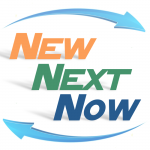Sick and Tired of Being Treated and Dying

If you are seriously ill, your first thought is to go to a hospital. But in the US, that move may kill you. I am not kidding. Consider these recent words from Robby Berman (@everyrobby):
Let’s get right to it: the third leading cause of death in the United States in 2013 was medical error. So we’ve got cancer, heart disease, and then the people who are trying to cure you. According to an study done by patient safety experts at Johns Hopkins and published by BMJ (formerly the British Medical Journal), you’re more likely to be killed by a doctor in the US than by lower respiratory disease. Or an accident. Or a stroke. Or Alzheimer’s, diabetes, flu and pneumonia, or kidney disease.
That’s the beginning of a superb atticle in BigThink [link], from last May. It will introduce you to a problem that I suspect is found in healthcare across the world.
Happily, Usha Lee McFarling (@ushamcfarling) has a February 2017 report on someone who has been tackling the problem with the gusto of a true NextSensor. Stat has just published “A millionaire’s mission: Stop hospitals from killing their patients by medical error” [link]. The equally powerful article draws a close focus on Joe Kiani, who is one of the founders and leaders of Masimo [link], a company that makes medical measurement devices. According to the article:
It’s not a glamorous cause. And Kiani is not a household name. But he is a multimillionaire with a proven track record of using engineering smarts to fix dogged problems; he made his fortune improving the humble pulse oximeter, which measures oxygen saturation in the blood. Now, he’s pushing a nerdy, but elegant, idea for saving lives: prodding manufacturers of medical devices and electronic records to open their platforms so all the systems can talk to each other.
His tech fix — if widely implemented — could bring order to the cacophony of beeps, buzzes, and blaring alarms that can so overwhelm nurses and doctors that they push “mute” and miss true emergencies. It could make it easier for staff to monitor patients with complex needs. And it could flag, in advance, potentially fatal errors like incorrect dosing and drug allergies.
The article takes a close look at Kiani (who came to the US from Iran at the age of 9, able to speak only three words of English). The author details some of the controversy around his methods to bring hospital healthcare into the 21st century. Nonetheless, the article makes clear that, despite the controversy, progress is being made. “In the past five years, Kiani has encouraged — some would say browbeat and publicly shamed — 70 companies to sign a pledge to open their platforms. The group includes some of the biggest medical device manufacturers — who also happen to be some of his most bitter corporate rivals.” I commend both articles to you and note that such reports prove again that every field of endeavour holds some tangent that is ripe for a nextsensing revolution.
Since Kiani has an enginnering background, the article brought to mind one of my favorite books. In my work with executives I often use the framework from Rich Gold’s The Plenitude [link]. Gold frames four “hats” worn by the creators of new things: the artist, the designer, the scientist, and the engineer. To be super brief, the artist creates things by translating his or her inner vision; the designer creates based on iterative user feedback; the scientist creates from the pursuit of truth; and the engineer creates based on the specifications of a defined problem.
It just may be, as the article suggests, that had Kiani been a medical doctor, he might have been blind to the problem at hand. By being able to wear an engineer’s hat, he could assess the data with a non-medical point of view and think through what it would take to address a problem that was, and is, literally killing people.
The lesson? I spoke in my most recent e-book about the value of having a leadership circle [link]. The reason for that is that disparity of backgrounds and perspectives is what’s most needed to pioneer the future. The integration of disparate sources of information — data — into a coherent whole is many times a powerful way both to understand problems and to generate novel solutions.
In the case of human beings and medicine this could not be more appropriate, as our bodies function as an integrated system even if doctors, their monitoring devices, and their treatment regimens are biased toward isolating problems as if they were not part of a larger organism. That’s why Kiani, and all the others who have joined them, need our salute for breaking down long-standing barriers to managing patient data. The 70 companies Kiani has persuaded to open up their systems may seem a small step. Yet, it is a signal step toward reaching a tipping point wherein widespread adoption becomes inevitable.
Healthcare and well-being are just two examples of how data will soon be used to our greater advantage. Channeled through a wider use of electronic sensors, then funneled into the Internet of things, big data will soon set the stage for ground-breaking advances for those willing to think differently. When medical errors are the third most probable reason for someone to die, it’s time to take hold of the status quo and strangle it first.
Here are some related links you might also enjoy.
Kristen Sturt reports on “7 Amazing Medical Breakthroughs That Will Wow The World In 2017” in The Huffington Post [link]. From tricorders (a la Star Trek) to curing Alzheimer’s with ultrasound, Sturt’s article will generally wow you.
ABC News Point has proffered a list of the “Top 10 Best Hospitals in the World” for 2017 [link]. Says the site: “When there’s an issue of health concerns, the initial choice you made is to look for several best hospitals that can give you satisfied medical care…. The rating of these top 10 best hospitals in the world is prepared [by weighing] health care services, medical advancement and comforts they are providing.”
Bernard Marr (@bernardmarr) studied how big data is being used in France. Check out “Big Data In Healthcare: Paris Hospitals Predict Admission Rates Using Machine Learning,” which allows the reader to get a hands-on feel for the intersection of using big data inside a healthcare system that has long operated without it. The article is on Forbes [link]. Says Marr: “It’s just one more way in which cutting-edge data science is being applied to real-world problems in healthcare, along with creating personalized medicines, fighting cancer and streamlining pharmaceutical trials.”
 Joseph Pistrui (@nextsensing) is Professor of Entrepreneurial Management at IE Business School in Madrid. He also leads the global Nextsensing Project, which he founded in 2012.
Joseph Pistrui (@nextsensing) is Professor of Entrepreneurial Management at IE Business School in Madrid. He also leads the global Nextsensing Project, which he founded in 2012. 
